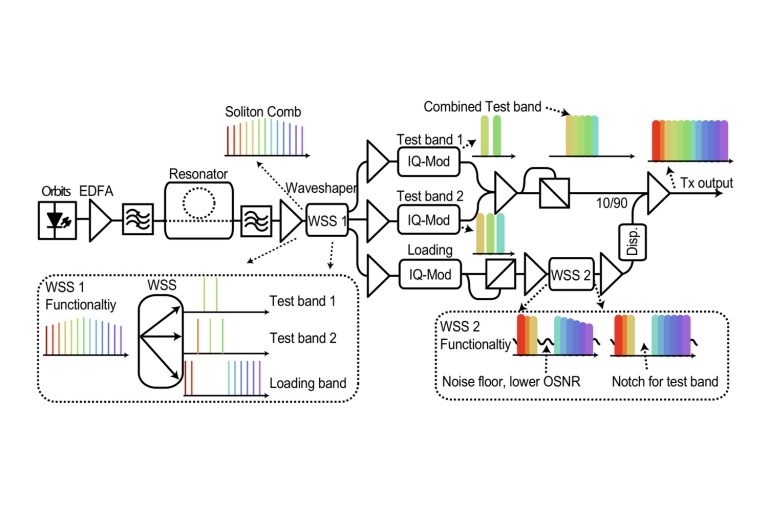High spectral efficiency coherent superchannel transmission with soliton microcombs was published in Journal of Lightwave Technology
- July 20, 2021
- Quantum and Nonlinear Optics
Title: High spectral efficiency coherent superchannel transmission with soliton microcombs [Journal of Lightwave Technology, arXiv, PDF]
Authors: Mikael Mazur, Myoung-Gyun Suh, Attila Fülöp, Jochen Schröder, Victor Torres-Company, Magnus Karlsson, Kerry J Vahala, Peter A Andrekson
Published on 1 July 2021. Submitted on 22 Dec 2018.
Abstract: Optical communication systems have come through five orders of magnitude improvement in data rate over the last three decades. The increased demand in data traffic and the limited optoelectronic component bandwidths have led to state-of-the-art systems employing hundreds of separate lasers in each transmitter. Given the limited optical amplifier bandwidths, focus is now shifting to maximize the spectral efficiency, SE. However, the frequency jitter from neighbouring lasers results in uncertainties of the exact channel wavelength, requiring large guardbands to avoid catastrophic channel overlap. Optical frequency combs with optimal line spacings (typically around 10-50 GHz) can overcome these limitations and maximize the SE. Recent developments in microresonator-based soliton frequency combs (hereafter microcombs) promise a compact, power efficient multi-wavelength and phase-locked light source for optical communications. Here we demonstrate a microcomb-based communication link achieving state-of-the-art spectral efficiency that has previously only been possible with bulk-optics systems. Compared to previous microcomb works in optical communications, our microcomb features a narrow line spacing of 22.1 GHz. In addition, it provides a four order-of-magnitude more stable line spacing compared to free-running lasers. The optical signal-to-noise ratio (OSNR) is sufficient for information encoding using state-of-the-art high-order modulation formats. This enables us to demonstrate transmission of a 12 Tb/s superchannel over distances ranging from a single 82 km span with an SE exceeding 10 bits/s/Hz, to 2000 km with an SE higher than 6 bits/s/Hz. These results demonstrate that microcombs can attain the SE that will spearhead future optical networks.


